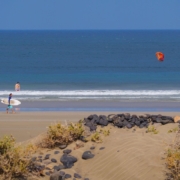On 3rd April, Spain will stop accepting applications under its “Golden Visa” scheme, bringing an end to one of the easier ways to gain Spanish residency – as long as you were wealthy enough.
The Golden Visa scheme allowed non-EU property buyers to obtain Spanish residence in return for investment in property worth at least €500,000. 14,576 Golden Visas were issued in the ten years that the scheme existed, and the majority of applicants were from China, Russia, the UK, and the USA.
The Spanish government took the decision to end the scheme last year, after a spike in applications which suggested that properties were being purchased by foreign buyers as speculative investments. In a full-scale housing crisis, the executive felt that this could no longer be justified.
Spanish PM Pedro Sánchez claimed that 94% of new Golden Visa applications came from real estate investors, adding “speculative investment in housing is not the model we need, because it leads us to disaster and, above all, to lacerating inequality’.
The Golden Visa scheme had, in recent years, become more attractive to British buyers following the UK’s exit from the EU in 2021. It allowed non-EU buyers to stay for more than 90 days out of every 180 in Spain but also permitted applicants to maintain tax residence in the UK.
The 90/180 Day rule remains in place, limiting British nationals visiting Spain to spend just 90 days out of every 180 in the country and especially affecting “swallows” (people who own Spanish property who traditionally winter in Spain) and other property owners who are unable to enjoy their property the way they were accustomed to before Brexit.
However, campaigning against the rule also remains vigorous. The 180 Days in Spain page on Facebook remains a great source for news and developments, as well as organising the campaign against the rule and advocating for a bilateral agreement between the UK and Spain that will change the situation.
The introduction of passport stamping at Lanzarote’s Airport last year now means that it is easier for border officials to check if visitors to the island have outstayed their 90- day limit, but the stamping regime still appears to be fairly haphazard, and we have heard no reports of any “overstayers” being penalised.
However, the arrival of the digital Entry/ Exit System (EES) and the ETIAS visa waiver scheme are likely to make things much more efficient. Both schemes are due to be introduced this year, although they have both suffered several delays.











Leave a Reply
Want to join the discussion?Feel free to contribute!